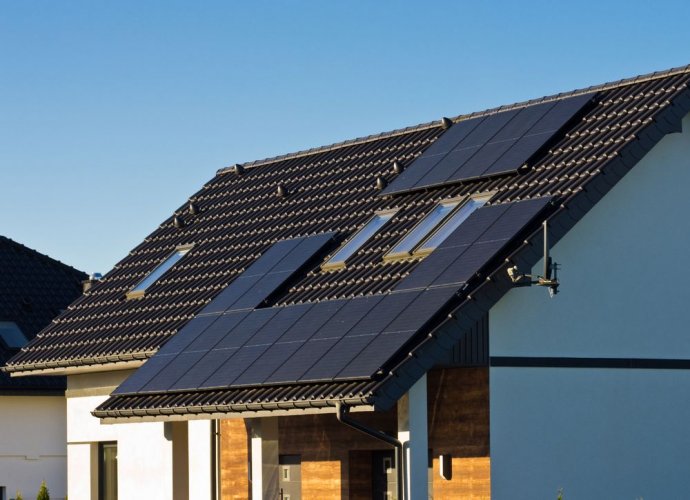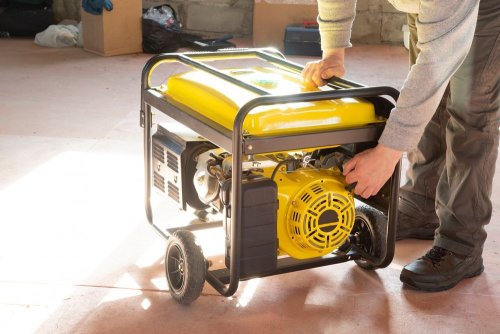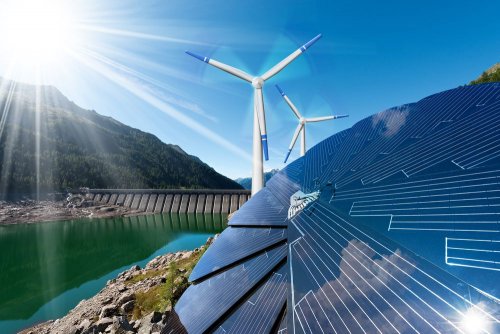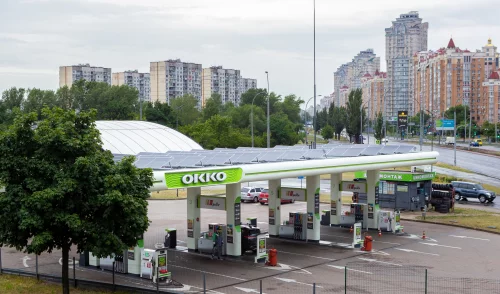Blackouts and constant power outages have become a part of our lives. They have forced many of us to look for alternative energy sources. To help our readers become more energy independent, EcoPolitic has compiled a detailed guide on which solar panels to choose based on your needs.
We have already mentioned that as soon as the state program of interest-free loans for the installation of energy equipment was launched, Ukrainians from all over the country began to use it. To help you follow their example, here are 5 steps to take to choose the best solar panels for your apartment, private house or condominium.
Step 1. Choose the type of solar panels
They are of three main types: monocrystalline, polycrystalline and thin film.
- Monocrystalline solar panels (Mono-Si) have the highest efficiency (efficiency – determines the ability of the panel to convert solar energy into electricity) – from 17% to 25%. They are made of solid silicon crystals, which ensure their high efficiency, but at the same time determine their high cost. If you have limited space for installing panels, you will have to choose the monocrystalline type.
The service life of such panels is up to 25 years.
- Polycrystalline solar panels (Poly-Si) have a lower efficiency – about 15% to 18%. They are made from many silicon crystals, and they also contain impurities. Therefore, they are cheaper to manufacture, but less efficient in low light conditions than monocrystalline solar panels.
You will need more space to install polycrystalline panels than monocrystalline options.
- Thin film solar panels (TFSC) have the lowest efficiency – from 9% to 13%. They are light, flexible and cheap. The weight of this type of solar panel is small, as the modules are made from a thin layer of silicon applied to glass or foil.
Due to their low efficiency, thin-film solar panels require more space to achieve the same output compared to other types of panels.
The service life of such budget solar panels is limited to 15 years.
Here, this table will help you make your choice of the type of solar panels based on your requirements and capabilities.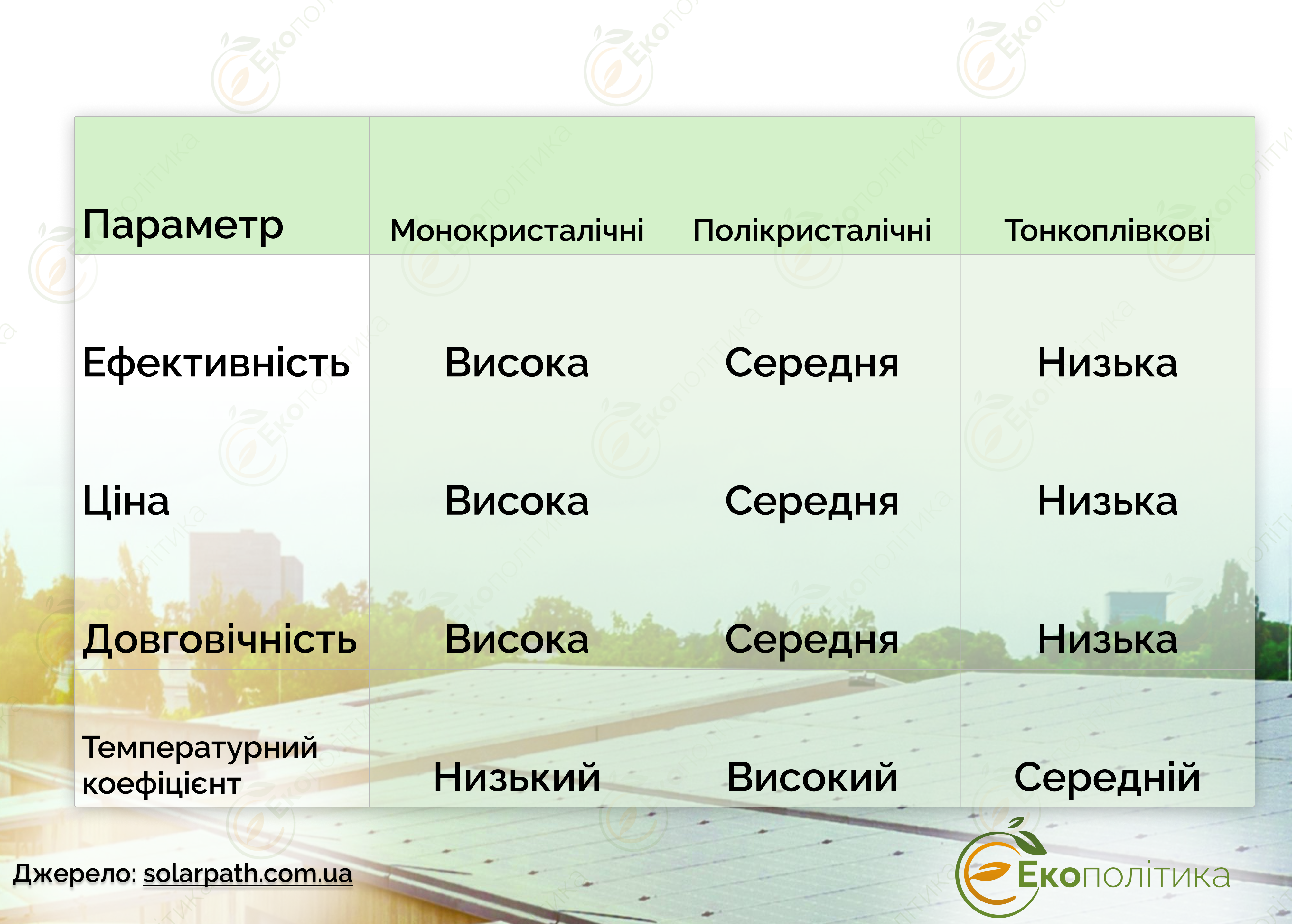
Source: solarpath.com.ua
Step 2. Determine the power of solar panels that will be needed for your apartment, private house or condominium
In general, power is one of the most important characteristics of solar panels. It is measured in watts (W) and reflects the amount of energy that the element produces in 1 hour.
When choosing solar panels to install on your roof or balcony, base your needs on electricity and the amount of space available to install the solar panels. It is important to choose panels that will provide the necessary power without overloading your system.
To determine which power you need, do these 4 steps:
- Analyze your energy consumption. To do this, see how much energy you consume per month. These data can be found in the electricity receipt, as well as on the websites of electricity service providers. If you do not have this data, you will have to go the more difficult way: make a list of all electrical appliances in the house and calculate how much electricity each of them consumes during the month and sum up the total.
- Choose an installation location. It can be a balcony, the roof of your house, a plot of land or another place. At the same time, keep in mind that solar panels should be installed where they will receive as much sunlight as possible for as long a period of time as possible. Determine exactly what area you can allocate for the installation of solar panels. In regions with high intensity of sunlight, monocrystalline panels will be the most effective. In areas where frequent precipitation and cloudiness are not uncommon, the efficiency of the panels decreases. Therefore, for them, it is worth choosing solar panels that work best in diffused light conditions.
- Calculate the required power. To do this, divide the amount of energy you use per month by the number of hours of sunlight in your area. The resulting number will be the power of the solar panels you need. For example, if you and your family consume 250 kWh per month and your area averages 125 hours of sunlight, you will need solar panels with a total capacity of 2 kW.
- Take account of losses. Don't forget the factor that up to 20% of the generated energy is lost on the way from the solar panel to the house. These losses are due to the resistance of the wires (the longer they are, the greater the losses), poor connection and other factors. Be sure to add 20% to the power of the solar panels calculated in the previous point.
Step 3. Ask about the technical parameters of the solar panels
Voltage and amperage will determine how quickly and efficiently solar panels will convert sunlight into electricity. If the voltage and current are small, the panels will work slowly and with less efficiency.
We will also remind you about the efficiency: monocrystalline solar panels have the highest efficiency, while thin-film solar panels have the lowest efficiency.
Step 4. Choose a reliable manufacturer
A number of important aspects depend on the quality provided by the manufacturer: the durability of solar panels, their efficiency and reliability in operation, as well as the terms of warranty service.
Let's understand the criteria for choosing a brand:
- Reputation of the manufacturer. It is advisable to choose a company that has authority in the Ukrainian market of solar panels and has good feedback from customers.
- The presence of an official representative office in Ukraine. If the manufacturer you have chosen has it, this is a big plus, because in the event of any problems with the product, they can be solved on the territory of Ukraine, without sending the product back to the manufacturer. It will also help to quickly solve all possible problems.
- Long warranty period. It will not only be a marker of the manufacturer's confidence in its solar panels, but also an additional insurance for you. The standard warranty period that manufacturers give for solar panels is 10 years. Some manufacturers offer longer warranties, up to 25 years.
- Availability of quality and safety certificates. Make sure that the solar panels you choose meet international quality standards and have the appropriate certificates. This guarantees their safety and effectiveness.
Solar panel manufacturers popular among Ukrainian consumers:
- I am Solar;
- Yinkosolar
- Canadian Solar;
- Hanvha I CELS;
- Trina Solar.
They offer high quality solar panels for home, private house, condominium and have a good reputation in the market.
Step 5. Calculate the cost of one produced watt of electricity
It is necessary to calculate this value in order to understand how profitable it will be to install the selected solar panels. At the same time, take into account the efficiency and service life of the selected solar modules.
On average, the service life of solar panels is 25-30 years. You can find solar panels with a longer service life from some manufacturers.
The service life of solar panels depends on type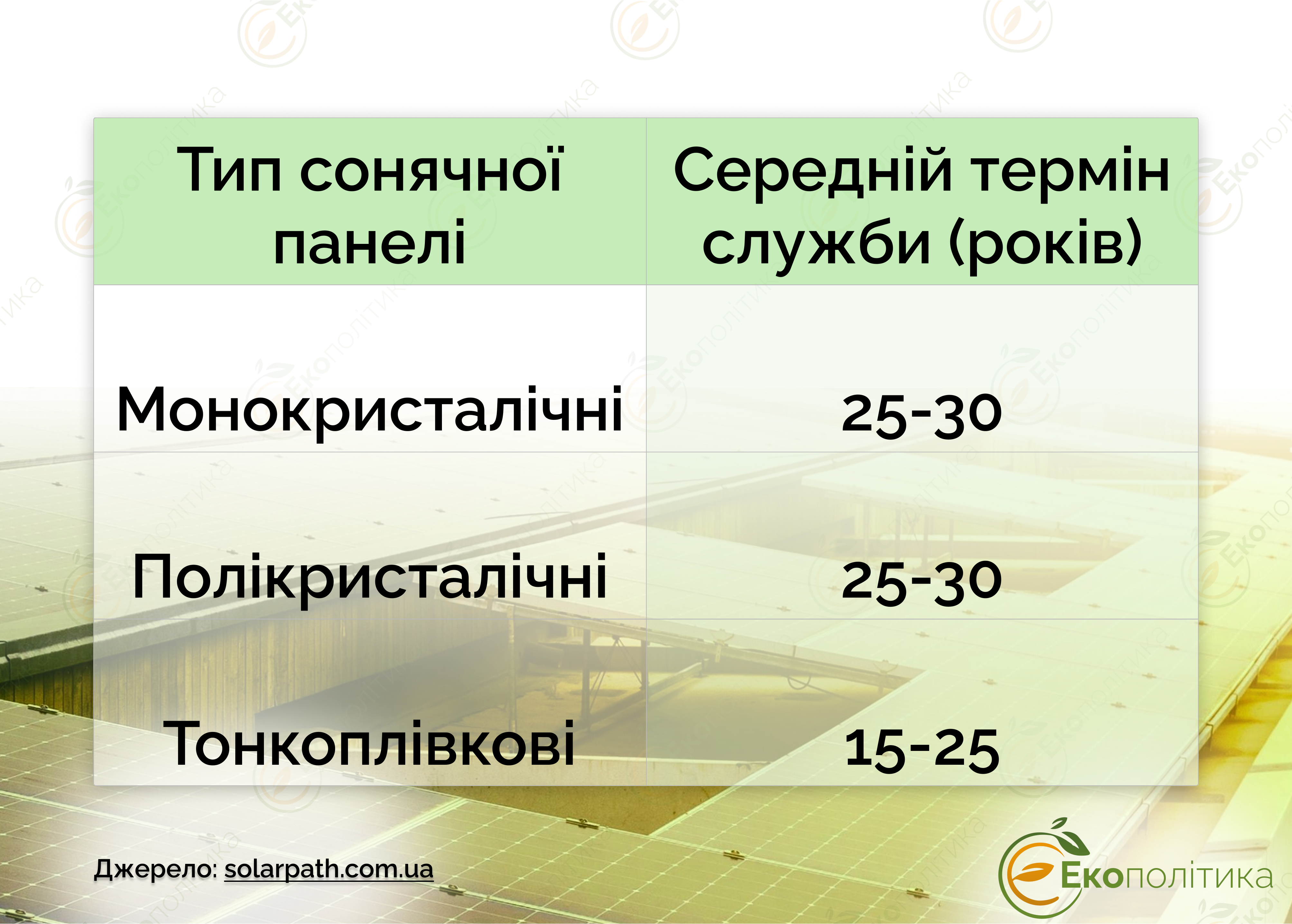
Source: solarpath.com.ua
We strongly recommend when solving the question "How to choose solar panels for a home, apartment, office, condominium?" analyze several options, and not stop at the first-best one. Be sure to read the reviews of those who have already purchased and installed these alternative energy sources.
Installing solar panels for the home requires significant capital investment. We remind you that you can get an interest-free loan under the state program for the purchase and installation of solar panels or wind power plants with electricity storage systems in households. 5 simple steps, which we wrote about earlier, will help you do this.

